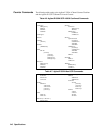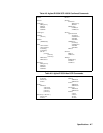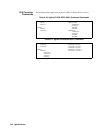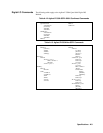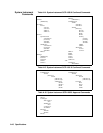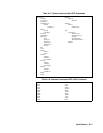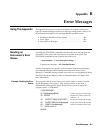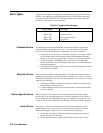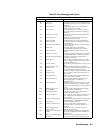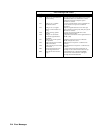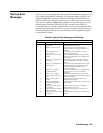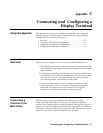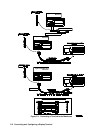
Appendix B
Error Messages
Using This Appendix This appendix shows how to read an instrument’s error queue, discusses the
types of command language-related error messages, and provides a table of all
of the System Instrument’s error messages and their probable causes.
• Reading an Instrument’s Error Queue . . . . . . . . . . . . . . . . . . . . B-1
• Error Types. . . . . . . . . . . . . . . . . . . . . . . . . . . . . . . . . . . . . . . . . . . B-2
• Start-up Error Messages . . . . . . . . . . . . . . . . . . . . . . . . . . . . . . . . B-5
1
Reading an
Instrument’s Error
Queue
Executing the SYST:ERR? command reads the oldest error message from the
instrument’s error queue and erases that error from the error queue. The
SYST:ERR? command returns response data in the form:
< error number> ,"< error description string> ".
Example error message; -113,"Undefined header"
Positive error numbers are specific to an instrument. Negative error numbers
are command language-related and discussed in the next section "Error
Messages". Command language-related errors also set a corresponding bit in the
Standard Event Status Register (refer to "Instrument Status" in Chapter 4 for
more information).
Example: Reading the Error
Queue
This program reads all errors (one error at a time, oldest to newest) from the
System Instrument’s error queue. After reading each error, that error is
automatically erased from the queue. When the error queue is empty, this
program returns: + 0,"No error".
10 OPTION BASE 1
20 DIM Message$[256] Create array for error m essage
30 REPEAT Repeat next 3 lines until error
number = 0
40 OUTPUT 70900;"SYST:ERR?" Read error num ber & message
50 ENTER 70900;Code,Message$ Enter error num ber & m essage
60 PRINT Code,Message$ Print error num ber & m essage
70 UNTIL Code= 0
80 END
Error Messages B-1




